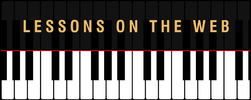|
How many of us made resolutions to exercise more this year? Bravo! Good ole January always brings the promises of all that we’re going to do to get in shape, lose weight, tone up, etc... But weight, wait rather…what about your fingers? Did you know that you need to warm up and “work-out” your fingers for your piano playing as well? It’s true! Although our fingers have no muscles in them, they do have tendons and ligaments that connect to our wrist and arm muscles. Warming up our fingers before actually playing of a piece or etude is important. It’s a way of waking up those smaller muscles and stretching out the tendons just like a runner does before starting out on the daily route. Scales are one of the best ways to warm up your fingers. Just by playing slowly through a few scales in the beginning of any practice session, you are giving your fingers a good starting warm up session. OK, but what comes after our scales? Is there anything else that we can play that will work out our fingers even more? Yes! Welcome to the world of Hanon! ♪ Who is Hanon? Charles-Louis Hanon (2 July 1819 – 19 March 1900), a French Pianist and Piano teacher who is most known for his works, “The Virtuoso Pianist in 60 Exercises”. Hanon was credited by Rachmaninoff as being a leading contributor to the large number of Russian virtuoso pianists that lived during his time. His exercises address many common challenges that pianists face, including trills, thumb crossing, and strengthening of the 4th & 5th fingers. The exercises are grouped by 20, and each group addresses specific technical issues. Numbers #1-20 are called “Preparatory Exercises” and are mainly focused at developing finger strength and dexterity. These exercises are aimed at getting the beginning student comfortable and efficient at basic piano technique. Numbers #21 – 40 are called “Further Exercises for the development of Virtuoso Technique”. They are more technically challenging and build upon the skills mastered from the first 20 exercises. Numbers #41-60 are called “Virtuoso Exercises for Mastering the Greatest Technical Difficulties”. These exercises deal with the most challenging aspects of piano technique and can only be mastered after the first 2 sections of exercises are perfected. Is it a marathon or a sprint? First, no one’s recommending that you sit for hours at your piano and play these exercises over and over again. In fact, some modern critics that say this type of practicing does nothing to improve a pianist’s playing or technique, and only serves to frustrate the musician and can delay growth. These exercises are the warm up to your marathon; they are not the whole race. Slowly, gently, and steadily wake up your fingers and arm muscles with them, just as you would stretch before a run. Do as much or as many as you need to feel limber and relaxed as you run into the next part of your practice session. Hanon Exercises are one of the best tools you can use to really excel in your piano playing. I welcome you to visit my YouTube page, where I have a couple of videos showing you how to play some of the Hanon Exercises! Let me know your experience with Hanon and keep us updated on how these exercises are improving your piano playing! |
AuthorMost blogs written by Archives
June 2020
Categories
All
|





 RSS Feed
RSS Feed